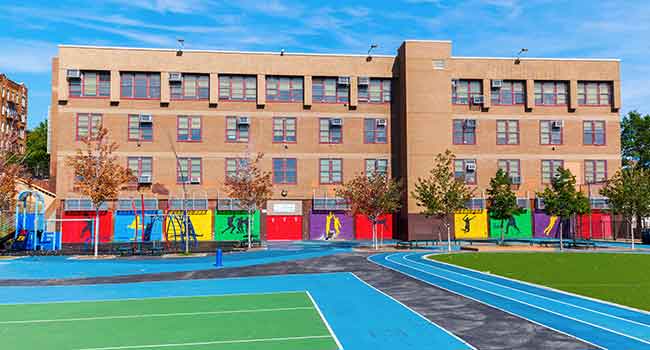
State Audit Shows NYC Schools Unprepared for Shootings, Other Emergencies
An audit of New York City schools released by New York State Comptroller Thomas DiNapoli found that some city schools are unprepared for a shooting or other emergency situations.
- By Jessica Davis
- June 18, 2019
An audit of New York City schools released Thursday by State Comptroller Thomas P. DiNapoli found that planning requirements for shootings and other emergency situations need to be more rigorously enforced by the city’s Department of Education.
Auditors found that the DOE was not strict enough in requiring that schools file their safety plans on time and that policies did not routinely align regulations with state requirements, leading to gaps and inconsistencies in planning.
When visiting schools and looking at safety plans, auditors found plans with incorrect or outdated contact information for key staff members, unarmed door alarms and radios that were turned off or not functional, among other problems.
“The state Safe Schools Against Violence in Education Act aims to keep school children and teachers as safe as possible in a time of school shootings by requiring districts to plan for the unthinkable,” DiNapoli said. “While it’s clear the New York City Department of Education takes school safety seriously, there are gaps that must be addressed. Schools large and small need to do everything possible to protect students and teachers from senseless tragedy.”
The audit is part of DiNapoli’s work focusing on educational issues, particularly school safety and security.
The Safe Schools Against Violence in Education (SAVE) Act, which was enacted in 2000, requires training and instruction for preventing and responding to school violence incidents and establishes a statewide uniform system for reporting incidents of violence. The SAVE Act also requires public school districts, charter schools and BOCES programs to develop comprehensive district-wide safety plans and building-level emergency response plans.
In an audit of NYC’s Department of Education, DiNapoli’s auditors looked at its efforts to oversee implementation of the SAVE Act, as well as the safety planning of the city’s 1,800 schools. Auditors found that city regulations that guide the DOE’s school safety oversight do not always align with the superseding SAVE Act and state regulations.
The audit also found evidence of lax compliance with several parts of the SAVE Act, including:
- Attendance at the monthly School Safety Committee meeting required by the city was poor. One school had only one or two of its 11 members in attendance for nine of its 10 meetings;
- DOE did not require schools to submit floor plans, which state regulations identify as a critical part of school safety planning and emergency response. Three of the 25 plans sampled were outdated and missing information regarding construction modifications;
- School safety plans were not stored in secured locations as required by state law and regulations, and one plan included an incorrect main phone number for the school and incorrectly listed key personnel;
- Five of the schools did not conduct the minimum amount of evacuation or lockdown drills, and for the 2016-17 school year, three of the schools didn’t conduct the drills in the required time frames;
- Missing information from the district-wide safety plan, including: procedures to test drills in coordination with local emergency responders; policies and procedures for responding to implied or direct threats of violence by visitors to the school; a description of school safety personnel duties, as well as the hiring and screening process for, and the training required of all personnel acting in a school security capacity; and policies and procedures for annual multi-hazard school safety training for staff and students; and
- While DOE works closely with, and submits its plans to the New York City Police Department, it has failed to submit the plans to the State Police, as required under the SAVE Act
For the last three school years, the DOE reported 219 school lockdowns and 684 instances in which students and staff had to shelter in place—more than three times the number of lockdowns. While SED does not require shelter-in-place drills, auditors noted that data supports the value of conducting them.
DiNapoli recommended the DOE do the following:
- Review and amend the city regulations to ensure they align and comply with the state regulations and guidance;
- Work with SED to develop a process to submit school safety plans to the State Police and establish a system to ensure that up-to-date building floor plans are submitted as part of the plans;
- Review school safety committee meeting information submitted by schools to ensure the meetings take place and cover meaningful safety information. Establish a minimum number or percentage of committee members to be in attendance for each meeting;
- Ensure that its review of safety plans addresses accuracy and completeness;
- Review procedures for monitoring emergency drills to ensure that all drills required by law are completed within the required time frames; and
- Incorporate relevant outside documentation into the district plans, including how drills are tested with local and county emergency responders and other preparedness officials.
The full audit can be read here.
About the Author
Jessica Davis is the Associate Content Editor for 1105 Media.